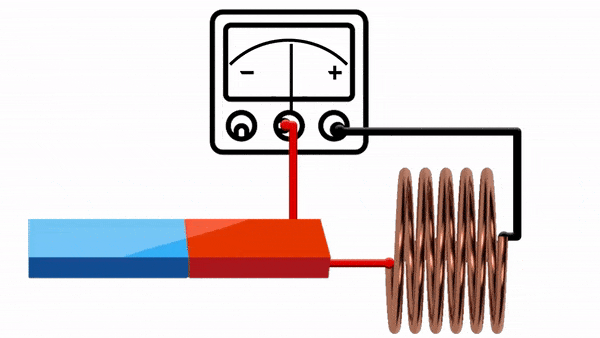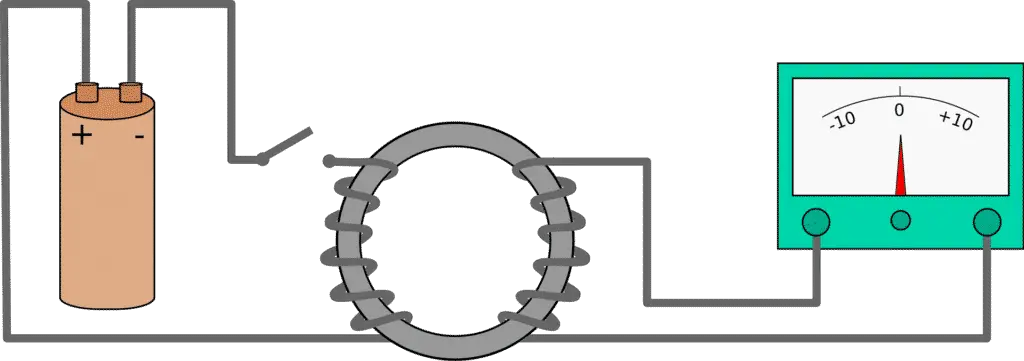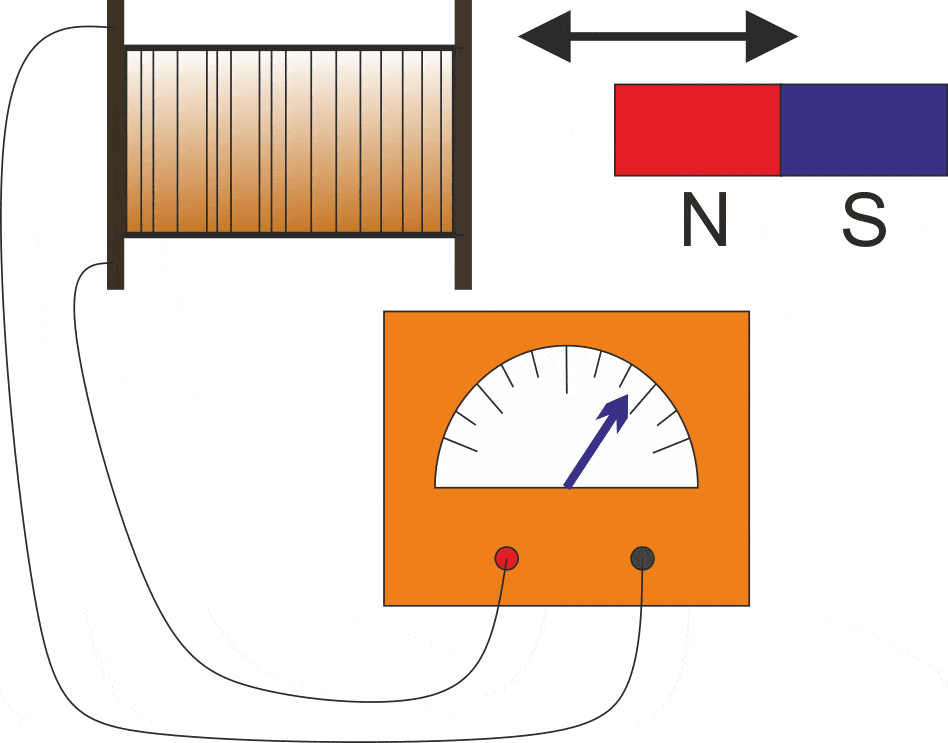Electromagnetic induction is a phenomenon by which electromotive force is produced across a conductor placed in a varying magnetic field. It was discovered by Michael Faraday in 1831 after performing several experiments for over 10 years in his laboratory in London. The discovery of electromagnetic induction led to the invention of electric transformers, motors, and generators.
The phenomenon of electromagnetic induction
When electric current flows through a wire, it creates magnetic field around the conductor. Likewise, when a conductor is placed in a magnetic field, the magnetic field can influence the charged particles in the conductor and cause electric currents to flow. In order to have any effect, the magnetic field must be changing.
A static magnetic field cannot induce an electromotive force in the conductor. There must be any relative motion between the magnetic field and the conductor. The relative motion can be between a magnet and a conductor can be achieved in several ways:
- The conductor is held stationary and the magnet can be moved towards or away from the conductor.
- The magnet is held stationary and the conductor can be moved towards or away from the conductor.
- Moving the conductor as well as the magnet and while maintaining a relative motion between them.
- Changing the surface area of the conductor.
- Rotating the conductor in the magnetic field.
- The conductor is held in an alternating magnetic field.
In all the above cases a force is exerted on the charged particles in the conductor, causing it to move. This force is called an electromotive force or emf.

Michael Faraday while performing his experiments found that when a permanent magnet is moved towards a coil, the galvanometer connected across it deflected towards one direction and it deflected towards the other direction when the magnet was moved away. He also found that the magnitude of deflection varied as the speed of movement of the magnet.
Faraday’s Law of electromagnetic induction

Faraday’s first law of induction
Faraday’s first law of induction states that “an electromotive force will be induced in a wire placed in a varying magnetic field”.
Faraday’s second law of induction
Faraday’s second law of induction states that “the magnitude of the induced EMF is proportional to the rate of change of the magnetic field in which the wire is placed”.
Where ‘e’ is the magnitude of the induced emf, ‘ϕ‘ is the amount of magnetic flux linking the coil, and ‘N’ is the number of turns of the coil. The negative sign indicates that the induced current will flow in a direction so as to oppose the change in the magnetic field.
From the above equation it is evident that the induced emf can be increased by increasing the number of turns of the coil, increasing the speed of relative motion between the coil and the magnetic field and by increasing the amount of magnetic flux.
Applications of electromagnetic induction
- Electric generator – In an electromagnet or a permanent magnet is moved relative to conductors to generate electricity.
- Induction motor – In an induction motor, emf is induced in the rotor by electromagnetic induction.
- Electric transformer – In electric transformers, energy is transferred from the primary winding to the secondary winding by induction.
- Induction chargers – In induction chargers, commonly known as wireless chargers, energy is transferred from the charger to a device by induction.
- Clamp meter – Clamp meter is an instrument used to measure current in a wire without any electrical contact.
Review
- Electromagnetic induction is a phenomenon by which emf is induced in a wire or coil whenever there is a change in the magnetic field.
- It was discovered by Michael Faraday.
- The amount of emf induced depends on the rate of change of the magnetic field linked with the coil.
- The magnitude of the induced emf can be formulated as follows:
- The polarity of the induced emf is given by the Lenz’s law.

